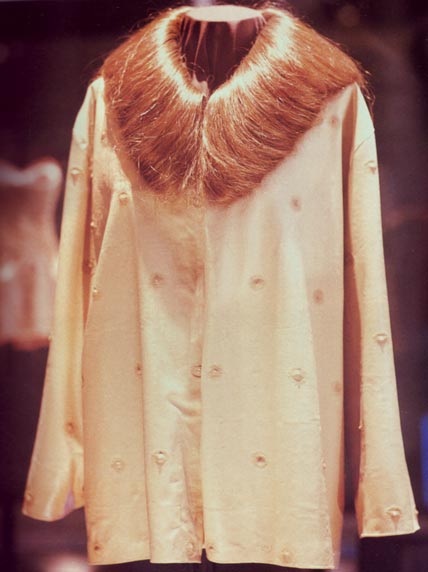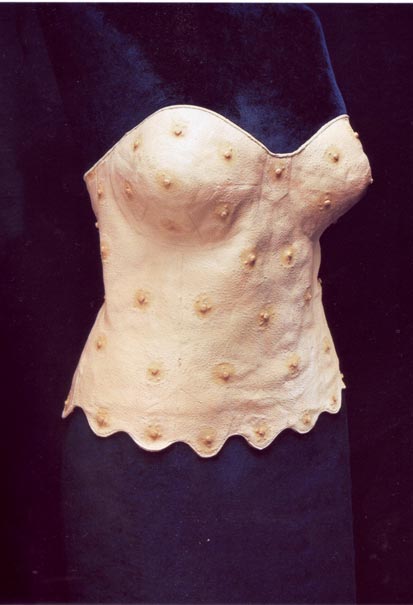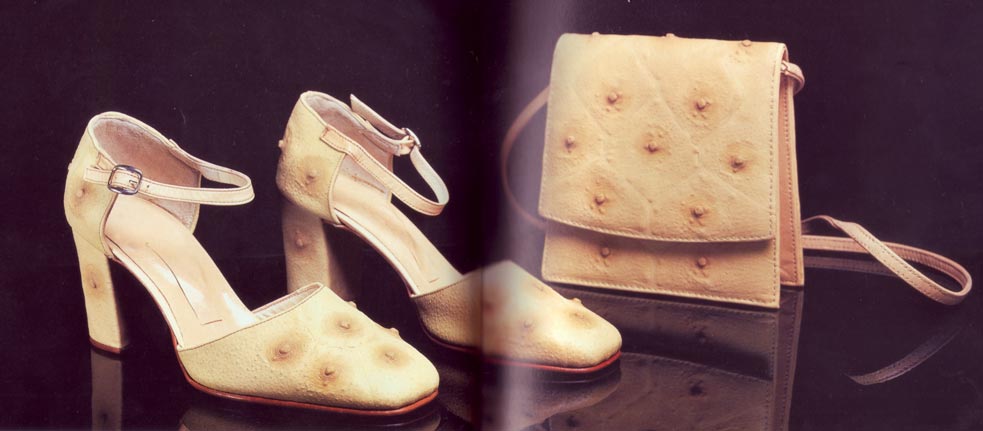 When shown at the Ruth Benzacar Galeria de Arte,
Buenos Aires, or the XXIV São Paulo Biennial, the
perception of their aesthetic altered drastically. Viewers were
uncertain whether they were looking at haute couture or
artworks.
When shown at the Ruth Benzacar Galeria de Arte,
Buenos Aires, or the XXIV São Paulo Biennial, the
perception of their aesthetic altered drastically. Viewers were
uncertain whether they were looking at haute couture or
artworks.Nicola Costantino is known throughout South America for her extraordinary garments for women, subtly decorated with elements moulded from parts of the human body. Her fascination with fashion, flesh and fetish has led to a body of work that is both beautiful and controversial.

These dresses arouse varying degrees of curiosity and
bemusement depending on the environment in which they are
displayed. Shown in both fashion and art contexts, their function
shifts according to the systems and conventions inherent in these
different worlds. When they appeared on the cover of Esquire and
in the window of Lewis' Department Store in Liverpool, they were
often mistaken for the work of a fashion designer. When shown at the Ruth Benzacar Galeria de Arte,
Buenos Aires, or the XXIV São Paulo Biennial, the
perception of their aesthetic altered drastically. Viewers were
uncertain whether they were looking at haute couture or
artworks.
When shown at the Ruth Benzacar Galeria de Arte,
Buenos Aires, or the XXIV São Paulo Biennial, the
perception of their aesthetic altered drastically. Viewers were
uncertain whether they were looking at haute couture or
artworks.
Costantino's beautifully crafted costumes are made of beige
silicon which imitates human or animal skin.
 Worn by elegant mannequins,
their softness and fleshy colour evoke feminine sexuality. This
illusion of real skin arouses the desire to caress and touch. But
like gazing at sensuous supermodels on catwalks, it must remain a
visual seduction.
Worn by elegant mannequins,
their softness and fleshy colour evoke feminine sexuality. This
illusion of real skin arouses the desire to caress and touch. But
like gazing at sensuous supermodels on catwalks, it must remain a
visual seduction.
 On closer inspection, we are astonished to find
that the flesh, which appears so real, is fake. Moulded on the
delicate surface are a series of nipples, navels and anuses,
along with human hair.
On closer inspection, we are astonished to find
that the flesh, which appears so real, is fake. Moulded on the
delicate surface are a series of nipples, navels and anuses,
along with human hair.

This fleshy outer skin, decorated with casts of human
erogenous zones, covers the real body of the wearers, touching a
nerve that triggers all kinds of associations relating to fetish,
fear and infatuation. The women who wear these garments can be
seen as seductive bait, waiting to be consumed. But they can also
be interpreted as predators, ready to devour. The small squares
of `skin', neatly sewn to display breasts and sphincters, bring
to mind the obsessive acts of serial killers who collect human
bits and pieces as trophies. One might even say that Costantino's
dresses are metaphors for fashion as a form of
cannibalism.
Camouflage and disguise - and by implication, clothes, make-up and jewellery - have the power to transform our perception of reality. While Costantino's skin-toned fabrics signify attraction, seduction and the politics of pleasure, they also make us aware of the innate human instinct to dominate, manipulate and control. Apinan Poshyananda First published in Fresh Cream, Phaidon, 2000